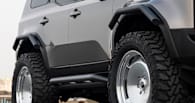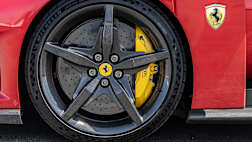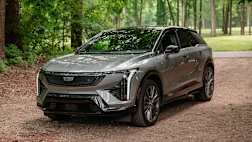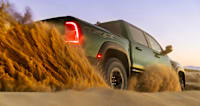Before I talk about how Super Cruise — the hands-off self-driving system that’s being used by hundreds of thousands of Americans every day in GM and Cadillac vehicles — almost killed me, I’d like to say how impressed I was by its work.
Super Cruise was recently voted the best autonomous driving technology by the respected Motor Trend magazine and it’s currently logging 45 million hands-free kilometres of driving in North America… every month.
I’ve tried, and not enjoyed, Tesla’s self-driving systems before, and I’ve sat in the back of an autonomous taxi in San Francisco and was shocked at how quickly it started to feel comfortable.
-
Aussie buys $1m-plus car you can't even drive here: This little known luxury car is competing with some of the biggest players in the game, and its starting to make an impact in Australia
-
What's next? Why General Motors Australia is running out of options after the launch of the GMC Yukon Denali
-
Is the ultimate SUV coming to Oz? GM luxury brand open to petrol power for Australia if electric vehicle downturn continues, which opens the door to the Cadillac Escalade to battle Range Rover
Switching on the Super Cruise function — which uses two short and one long-range radar at the front of the vehicle, another four short-range radars at the rear, and a camera, combined with detailed LiDAR mapping of more than 900,000km of US roads — did initially cause my breathing to quicken and my hands, which didn’t know what to do with themselves, to go clammy.
The system, a US$2500 option in the Cadillac Vistiq I was driving (that includes three years of connectivity, which you need because the maps are constantly being updated, and after that time it’s a US$25 a month subscription) is simple enough to start up, as the car tells you when it’s available and when you press the button the top section of your steering wheel lights up green (a bit like the gear-change lights on a Ferrari, but less spectacular).
The sensation of taking both your hands and feet off and being allowed to look away from the road (for up to five seconds, long enough for my younger colleagues to check Instagram while at the wheel, or at least near it) is utterly unnerving at first, but the better the job the Cadillac was doing, the more relaxed I became.
And when the car initiated its own lane change, because the traffic in front of me was slowing and it could “see” a better way to maintain my speed by overtaking the vehicle in front, I was hugely impressed.
.jpg)
These “system initiated” lane changes only became possible in 2022, and you can also instruct the car to change lanes yourself, simply by operating the indicator stalk.
I was hugely impressed by this because I remember, many years ago when a Japanese engineer was showing me a very early version of autonomous technology how he told me that the hardest thing for a robotic car to do was to change lanes, because there are so many moving elements to deal with.
After about 10 minutes of Super Cruising — waving madly at passing cars with both hands, making music with both cheeks and some air popping — I was starting to feel almost relaxed, but not quite.
.jpg)
When I saw a large pick-up truck with a trailer approaching from my right in a merging lane, I had time to ask my passenger: “Do you think Super Cruise can see that?” before I started mildly panicking. Our closing speed was over 100km/h, the truck driver clearly hadn’t clocked me and we were headed for a nasty, high-speed crash. Bizarrely, I had time to feel bad for Super Cruise and toyed with the thought of giving it another second to redeem itself and spot the problem, but at those speeds, options run out fast and I had to grab the wheel, and brake, to avert disaster.
An hour later I sat down with Jeff Miller, the product manager for Super Cruise, who seemed unbothered and unsurprised by my experience, pointing out that I’d basically experienced the system’s blind spot, and that this was why it’s a Level Two autonomous system, meaning the driver is supposed to be paying attention. He also assured me that Super Cruise would have reacted, eventually.
“At that point, active safety features would take over, and those active safety features tend to be less comfortable, they're more abrupt,” he said. “You would have probably gotten an AEB and a braking event, there, once the vehicle was directly in front of you.”
.jpg)
What worried me, looking back on it, was that if I was a normal Super Cruise user, someone who’d inevitably be blasé about it (of the more than 450,000 Americans using Super Cruise every month, 80 per cent say it contributes to a more relaxing driving experience), I quite likely might not have noted the danger, and something very “abrupt” would have happened.
My passenger, a motoring enthusiast who hates all autonomous systems with a passion, was both shaken and enraged by the experience.
Fortunately, he won’t have to worry about Super Cruise, at least, being on Australian roads any time soon. Getting it to work involves a process of LiDAR mapping that “costs millions” and typically takes about two years to cover a single country, according to Miller.
Insanely, car companies are not sharing this information with each other, so the maps they create for their autonomous systems are proprietary.
As for other companies - like Tesla - offering this kind of autonomy on Australian roads, I fear - and fear is the word - they are a lot closer.







.jpg)
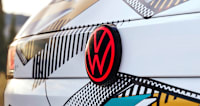

.jpg)
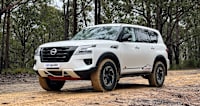

.jpg)
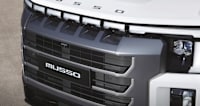





.jpg)
